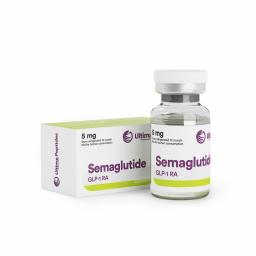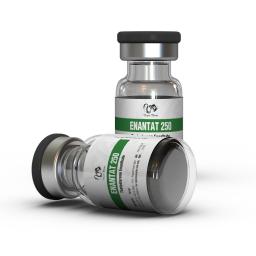Improved health, nutrition and medical treatments have resulted in increased life expectancy for both men and women. Most women in developed countries can expect to live at least 25 to 30 per cent of their life after menopause.
A great deal of research has been done and is still continuing into the effects on women’s long-term health during this time of life. Not all women suffer from signs of menopause, in fact 20 per cent have no symptoms. Some 60 per cent have mild symptoms, while only 20 per cent suffer severe symptoms.
Nutrition, physical activity and an emphasis on a healthy lifestyle for bone and heart health and weight management are vital at this stage of life.
There are many ways of coping, though it often depends on the severity of the symptoms. There are a range of therapies available including hormone therapy – HT (also known as Hormone Replacement Therapy – HRT) as well as other therapies.
Coping with symptoms
Many women cope with mild symptoms without any treatment.
- Regular exercise often helps because this promotes wellbeing, enhances relaxation and sleep, and may reduce menopausal symptoms other than hot flushes.
- Healthy eating habits with foods rich in phytoestrogens such as soy products or linseed may be beneficial.
Women with mild to moderate symptoms may prefer to take herbal or plant hormone therapies, which should be either monitored or prescribed by a qualified naturopath or herbalist with an interest in women’s health.
Women with more severe symptoms may find hormone therapy (HT) beneficial.
Choice of therapy
There has been increasing interest in natural therapies for menopause and for general health maintenance. Many women may not be aware that natural and prescription hormones may come from the same natural source, such as the Mexican Yam.
Research conducted so far on natural therapies has generally involved small trials which have suggested little benefit over placebo (dummy pills) for these therapies. Natural therapies are also often assumed to have few or no side effects or risks but this has yet to be determined in large scale controlled scientific trials.
Factual and balanced information on both the benefits and risks of different treatments is provided here (for more see Therapies) so women can discuss their options with their health practitioner.
Hormone therapy (HT / HRT) – What are the benefits and risks?
Treatment of menopause symptoms
The most common menopause symptoms are hot flushes and vaginal dryness. Hot flushes and night sweats are symptoms of the fall in a woman’s oestrogen level at the time of menopause. No other therapy has been shown to be as effective as oestrogen replacement therapy in reducing hot flushes.
Vaginal dryness is related to oestrogen loss and women with significant problems may benefit from the use of vaginal oestrogen preparations such as tablets or cream.
Many women using oestrogen therapy also obtain relief from a range of other menopause symptoms which seem to be related to low levels of oestrogen – such as lowered mood, anxiety, insomnia, headaches, muscle and joint pain and decreased sex drive.
Other effects of HT
Osteoporosis
HT reduces the risk of osteoporosis. It acts by preventing bone loss. This decreases fractures of the vertebrae (spine) by up to 40 per cent and also reduces hip fractures.
Heart disease
Original studies indicated that oestrogen replacement therapy may protect postmenopausal women against coronary heart disease. Recent trials have confirmed these findings in women aged under 60 years, but may increase heart disease risk in women starting therapy with oral hormones over 60 and especially over 70 years of age. Standard oral therapy should be avoided in women who already have established coronary heart disease.
Short-term memory and Alzheimer’s disease
Some studies suggest that oestrogen may prevent or delay the onset of Alzheimer’s disease. A recent study in women starting HT over 65 years (average age 72) showed a small increase in the risk of dementia.
Colorectal cancer
There is evidence from a major trial that HT reduces the risk of colorectal cancer.
HT – Risks
Breast cancer
Many environmental and lifestyle factors must be considered in the incidence of breast cancer.
Studies including a large randomised trial have indicated that HT is linked to a small increase in breast cancer after 5-7 years of treatment with combined HT. This risk is of the same order as drinking more than two glasses of wine daily, being overweight/obese or having your first pregnancy over 35 years of age.
The effect of HT on breast cancer risk for women who have a family history of breast cancer (mother or sister) appears to be the same as for women who have no family history of breast cancer.
Thrombosis
There is an increased risk of venous thrombosis (blood clots in the veins) in women using HT, however the incidence is very low and more likely in the first year of therapy. More research is needed to identify which women are more likely to be at risk.
Any decision about HT is an individual one and should be made after each woman is informed about her individual risks, benefits, needs and concerns in consultation with her prescribing practitioner.
HT – Other considerations
Weight gain
Women tend to gain weight, particularly around the abdomen (stomach), in their middle years whether they take HT or not. Most studies do not show a link between weight gain and HT use. In fact in several studies women who used HT had less weight gain than those who did not.
Bleeding
Some women may experience vaginal bleeding after starting HT. In most instances this can be managed simply by varying the dose or type of HT used. However all persistent unexplained vaginal bleeding must be investigated to exclude other causes such as polyps or fibroids.
Skin
There is some research to suggest that postmenopausal HT may prevent some aspects of skin ageing by increasing skin collagen. However further studies are needed to evaluate the effects of oestrogen on the skin.
Overall the main reason women choose to commence HT is for symptom relief aiming for short-term use (usually between 1-5 years).
Phytoestrogens – What is the evidence?
Phytoestrogens are substances found in many edible plants. Common food sources include soy beans, legumes, lentils, tofu, whole grain cereals, vegetables, garlic and linseed. There is widespread belief that a diet rich in phytoestrogens will relieve menopause symptoms and protect against various cancers. These proposed benefits of phytoestrogens in foods are not supported by the available evidence from clinical trials in humans.
Phytoestrogen supplements have not been shown to significantly relieve hot flushes. Most studies show that high dose phytoestrogen supplementation is no better in reducing hot flushes than placebos.
Many women who use soy products may also have a high fibre, low fat diet. Studies have not separated the claimed benefits of phytoestrogens from other diet features such as high fibre, low fat and high intake of antioxidant vitamins.
Osteoporosis
There is no evidence that a high phytoestrogen intake will prevent osteoporosis.
Heart disease
Soy and other foods rich in phytoestrogens appear to have favourable effects on cholesterol levels and blood vessel function but it appears that other substances in foods other than isoflavones (phytoestrogens) may be necessary to maximise these beneficial cardiovascular effects. Therefore, phytoestrogens should be taken in the form of food.
Breast cancer
Again, protection against breast cancer may be more related to other dietary factors, such as intake of vitamins in the diet, high fibre and low saturated fat intake, in women who have a high dietary intake of phytoestrogens.
There is no evidence that phytoestrogen supplements protect against breast cancer in postmenopausal women.
Phytoestrogens – Risks
The safety and effectiveness of high dose phytoestrogen supplements have not been established and cannot be responsibly recommended. However, dietary intake of foods rich in phytoestrogens appears to offer health benefits.
Progesterone creams – What is the evidence?
Progesterone creams, available now only on prescription, are ineffective according to research conducted so far.
There are no studies supporting progesterone (in creams) as a sole hormone therapy. There is no evidence that progesterone creams can be safely substituted for synthetic progestins as part of HT.
Osteoporosis
There is no evidence from the research conducted of any benefits of progesterone creams in preserving bone.
Endometrial protection
There is no evidence from the research conducted that progesterone creams provide adequate endometrial protection for postmenopausal women who are using oestrogen replacement therapy. The amount of progesterone actually absorbed through the skin is totally inadequate to protect the endometrium.
A woman could be putting herself at risk if she substitutes synthetic progestogen tablets or patches with a progesterone cream, while continuing oestrogen.
Wild yam creams – What is the evidence?
Wild yam creams are available from health food stores and from direct distributors.
Wild yam is not a progesterone, and cannot be converted to progesterone. It is applied as a cream. Wild yam cream contains diosgenin, an oestrogen like chemical which can be converted in a laboratory to progesterone and oestrogens for the contraceptive pill and HT but it is not converted to progesterone by the body.
Diosgenin has not been shown to be beneficial in terms of relieving menopausal hot flushes, vaginal dryness or other common symptoms.
Top Steroid Products Sales
Arimidex
|
Deca 200 (2ml)
|
Enantat 250
|


